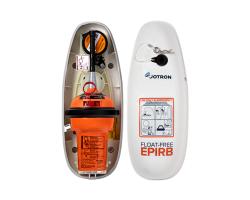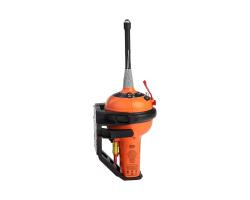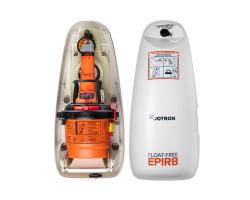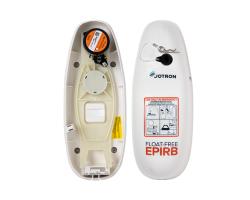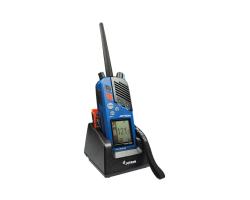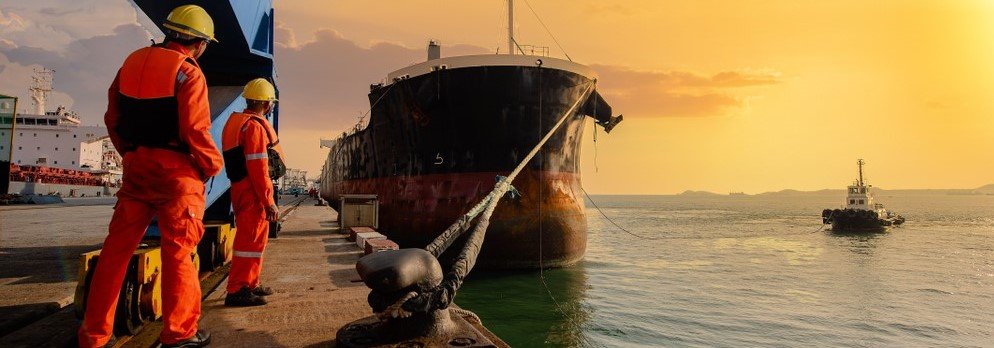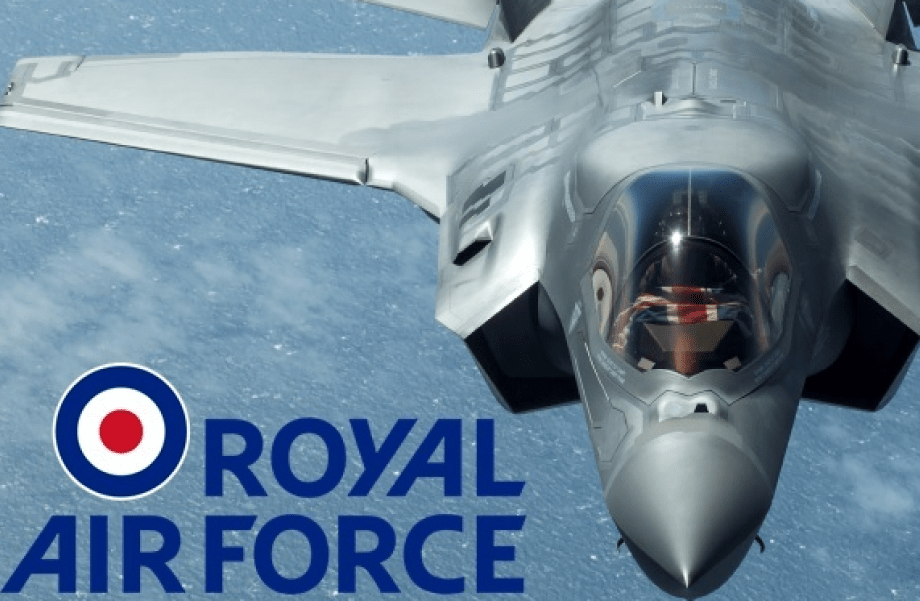Essential GMDSS Equipment: Do I Need an EPIRB?
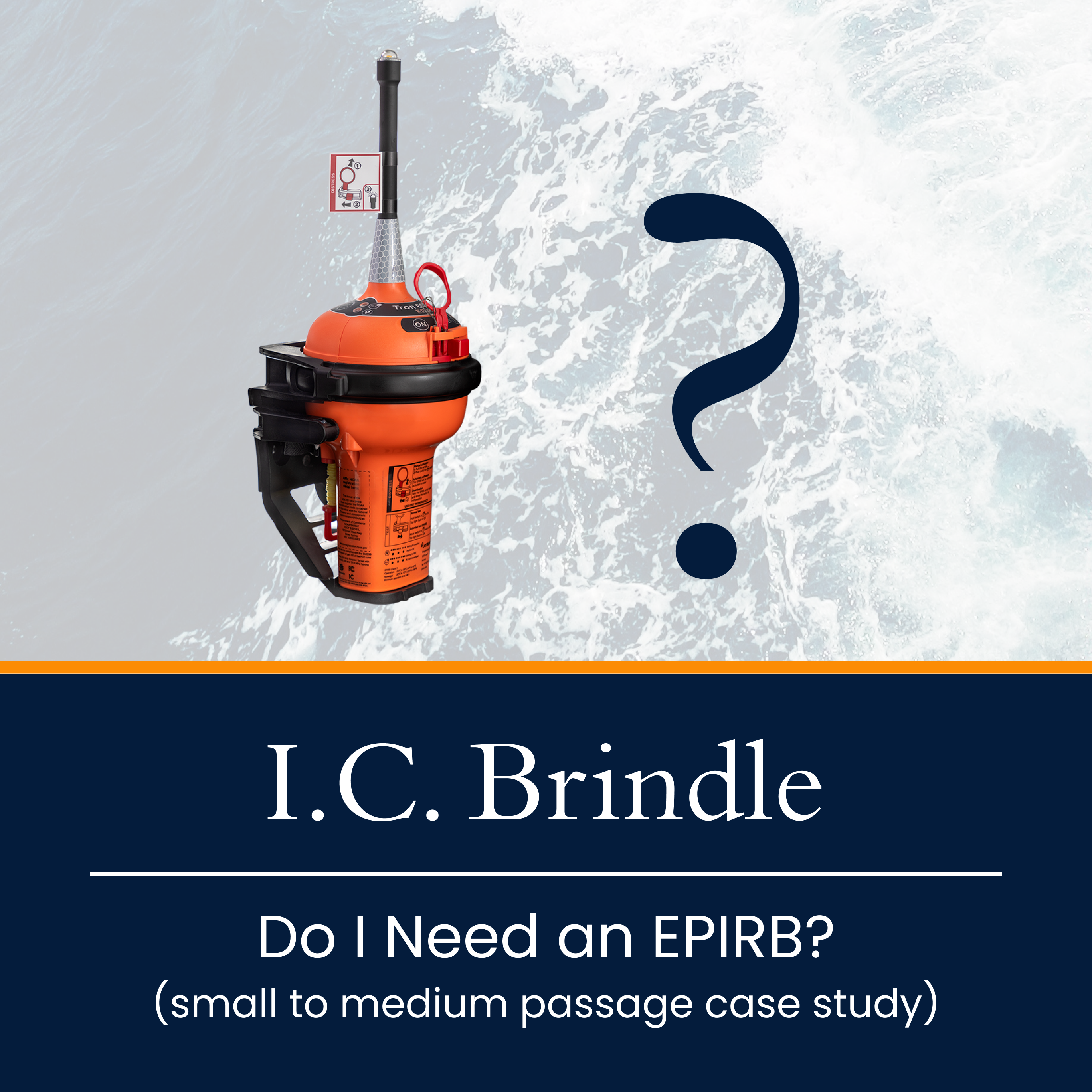
What is an EPIRB?
An Emergency Position Indicating Radio Beacon (EPIRB) is a distress beacon and piece of GMDSS equipment that, when activated, transmits a distress signal via satellite to search and rescue authorities, indicating that the vessel or person is in need of immediate assistance. It operates on two frequencies: 406MHz for alerting the authorities and 121.5MHz for homing purposes.
EPIRBs come in two types: manual and automatic. Manual EPIRBs require human intervention to activate, while automatic EPIRBs are designed to activate automatically when submerged in water. The location of the EPIRB must be carefully considered to ensure it can be easily accessed in an emergency yet protected from accidental activation or damage.
Now, let's delve into the various considerations when choosing between an EPIRB and a PLB (Personal Locator Beacon) and how they operate.
Do I Need an EPIRB on My Vessel?
When considering the necessity of an EPIRB for your vessel, it's important to evaluate both technical and personnel safety factors.
Technically, understanding the regulatory requirements and capabilities of EPIRBs can guide your decision-making process as a ship owner, or ship operator etc . Safety-wise, assessing the specific risks associated with your voyage, such as the likelihood of encountering adverse weather or being in areas with limited rescue services, can help determine the value of having this equipment onboard. Balancing these factors ensures that you make an informed decision that prioritises the safety of everyone on board your vessel.
In broad terms from a regulatory and technical perspective, all GMDSS ships (i.e. all passenger vessels and cargo vessels of 300 GT and over) engaged on international voyages and MODU vessels must carry a 406 MHz EPIRB. Other vessels (under 300 GT, sailing vessels, wooden/primitive ships, fishing vessels, etc.) are not required to carry a 406 MHz EPIRB but many choose to do so. However, national and local regulations requiring the carriage of 406 EPIRBs may also be applicable to vessels of other sizes and types.
From a safety standpoint, an EPIRB could be the decisive factor between surviving a sea incident...and facing a tragic outcome. So, having one onboard at all times isn't something to be overlooked, even on a relatively short passage.
For example, setting sail on an offshore voyage introduces a host of unique challenges and potential dangers that require thorough consideration. Yet, you might find yourself questioning the necessity of certain safety equipment given the nature of your voyage.
Given this, you might rationalise that your route takes you through heavily trafficked waters, and you'll likely remain within radio range of other vessels throughout the journey. Another rationale could be that you are sailing through an area with a well-established maritime patrol presence, where help is readily available if needed.
You should also consider the weather forecast for your passage, and the posssible consequences of encoutering of encountering severe weather.
Lastly, if you're in a group with multiple vessels, you might feel secure knowing that the other boats are equipped with the necessary safety gear, including EPIRBs, providing a collective safety net for everyone involved. Given this—you might wonder if you need one on your vessel aswell.
But can you afford to leave safety to chance?
While 'cutting corners' on safety gear might seem like a cost-saving measure, the consequences of being ill-prepared in an emergency can be dire. Remember, GMDSS equipment like EPIRBs may seem secondary on your priority list—until the moment you need one.
In such a situation, it's far better to have it readily available than to find yourself in a crisis without a piece of equipment that could potentially save your life and the lives of others. Put plainly, it's never a bad idea to be equipped.
To explore this further, let's put the importance of EPIRBs into context with a hypothetical scenario below:
Hypothetical Case Study: Evaluating the Need for an EPIRB?
Scenerio 1: Short Voyage from UK to Netherlands on 40ft Sailboat
As you prepare for your voyage, you stand on the deck of your sailboat, ready to embark. You take a moment to admire the sturdy craftsmanship of your vessel, a 40ft sailboat from the mid-70s. Sturdy and strong, you're confident she can get you just about anywhere without any trouble!
Your passage is 250 nautical miles (nm) from Southampton, UK, to Rotterdam, Netherlands (this is also your first time crossing the English Channel). From your planning reports, you expect to be within 5 miles of the UK coast for a significant portion of the journey. At an estimated 5 knots, with this in mind, you anticipate being on the English Channel and the North Sea for a little over two days.
However, a nagging concern lingers in your mind...
Despite your sailboat's undoubted strength, you realise that she lacks essential modern safety equipment, such as an Emergency Position Indicating Radio Beacon (EPIRB), or even a handheld radio, like a VHF (Very High Frequency).
As you contemplate the journey ahead, the potential consequences of this oversight weigh heavily on you. Without these crucial GMDSS tools, your ability to signal for help in the event of an emergency could be compromised.
But, given the cost, and the fact that you typically sail in the protected waters around the UK, is investing in an EPIRB really necessary? After all, there's a chance you might not venture offshore again for a long time...is an EPIRB worth the investment, even for occasional offshore voyages like this one?
In this scenerio, it's crucial to evaluate the safety measures on your sailboat.
While she may boast sturdy construction, the absence of modern safety equipment, such as an Emergency Position Indicating Radio Beacon (EPIRB), could raise concerns.
Scenerio 2: Small Commercial Fishing Vessel Outfit from Scotland to Norway
You are the captain of the "Northern Challenger" a sturdy trawler renowned for its reliability in the challenging waters of the North Sea. The vessel—measuring 60 feet in length—is equipped with state-of-the-art fishing gear and amenities for long days at sea.
Your planned passage entails a journey from Aberdeen, Scotland, to the fishing grounds off the coast of Norway, approximately 200 nautical miles away. Given the nature of your profession, you anticipate spending several days on the open sea, navigating through unpredictable weather conditions and remote fishing areas.
However, as you review your vessel's safety equipment, you realise that something is missing from your equipment inventory following a recent survey or audit—an Emergency Position Indicating Radio Beacon (EPIRB), which was advised for you to obtain. In its place, you rely solely on other communication methods, such as VHF radios and flares, to signal for assistance in case of an emergency, which passed the audit.
Contemplating the risks inherent in your line of work, you wrestle with the decision of whether to invest in an EPIRB for your trip. On one hand, your vessel frequently operates in remote and harsh marine environments, where access to immediate assistance may be limited. Additionally, the unpredictable nature of the sea upholds the importance of having reliable means of distress signaling—especially during emergencies such as engine failure or adverse weather conditions.
On the other hand, you acknowledge the financial constraints associated with outfitting your vessel with additional safety equipment. As a small-scale commercial fisherman, every expenditure must be carefully weighed against potential benefits and operational costs.
The decision to invest in an EPIRB for the "Northern Challenger" hinges on a thorough assessment of the vessel's operational requirements, the inherent risks of commercial fishing, and the regulatory standards governing maritime safety set our by both global and local authories. Balancing these considerations is essential in ensuring the safety and well-being of yourself, your crew, and the success of your fishing endeavors.
In both scenarios, the absence of an Emergency Position Indicating Radio Beacons pose significant safety concerns. While the vessels in question may possess sturdy construction and experienced crews, the unpredictable nature of the sea demands a comprehensive approach to safety.
In the case of the 40ft sailboat journey from the UK to the Netherlands, even though it's a relatively short voyage with proximity to the coast, the potential risks of adverse weather, equipment failure, or other emergencies cannot be ignored. Similarly, for the commercial fishing vessel operating in remote and challenging marine environments, the absence of an EPIRB compromises the ability to signal for help in critical situations, alongside the adherance to maritime safety regulations, which cannot be ignored.
Considering the potential consequences of being ill-prepared in an emergency, the benefits of investing in an EPIRB far outweigh the costs. Moreover, advancements in Global Maritime Distress and Safety System (GMDSS) technology have made EPIRB equipment more compact, affordable, and efficient than ever before. For example, the IMO's publication of Resolution MSC.471(101) introduces revised performance standards for EPIRBs, further enhancing their capability to assist in distress alerting and locating. With these latest updates, acquiring an EPIRB is a wise investment in maritime safety, even for vessels or organisations with limited budgets.
Let's discuss this more in the following sections:
Prioritising GMDSS Equipment
No one is likely to advise against taking safety equipment such as GMDSS, as it's always better to have it and not need it than to need it and not have it. Given our hypothetical scenarios above, many factors come into play when deciding if a piece of safety equipment is worth getting. Budget constraints, for instance, can significantly influence your decision to prioritise one piece of equipment over another.
To make an informed choice, you could list all the possible gear you might need, ranked from most important to least. Then, determine how far down the list you're willing to go based on your available budget.
Where does GMDSS equipment fall on this list for you?
For example, you might decide that dry suits are more important than an EPIRB / GMDSS. In that case, your budget might be allocated to cover a dry suit first. However, consider the critical function of each item. While a dry suit can protect you from hypothermia, an EPIRB can signal for help when you're in a dire situation, potentially saving your life.
In an ideal situation, both pieces of equipment would be included on your list of essentials to take with you. Balancing your priorities and understanding the specific functions and importance of each piece of safety equipment can help you make the best decision for your safety.
The Implications of Not Having an EPIRB or GMDSS Equipment
With all this being said, you could argue (apart from adherence to safety checks, audits, and regulatory responsibilities) that they're completely unnecessary...
Until you need one.
Consider the implications, without an EPIRB, or appropriate GMDSS equipment, your ability to signal for assistance during an emergency is weakened to meerely visual methods, such as flares. This vulnerability is particularly alarming given the unpredictable nature of offshore conditions, where adverse weather such as thick fog, or large swell could contribute to the inability to communicate with another vessel or coastguards.
Given these risks, it is essential to recognise the value of an EPIRB. Even for near-coastal passages, investing in this safety equipment is highly recommended. Personal EPIRBs provide invaluable peace of mind, ensuring that you have a reliable means of communication in emergencies, regardless of the conditions due to automated emergency signal communications so your emergency and distress messages
Additionally, for added safety during a near coastal passage (like the one in our scenario), you could also consider equipping yourself with a high-quality handheld VHF with GPS and DSC capabilities. Having one of these alongside your EPIRB or PLB would be a good idea too—brands like Jotron offer reliable options like the sturdy Tron TR30 AIR Handheld Radio.
Note - It is also important to keep in mind that if you think you'll be heading outside of VHF range, having an EPIRB on your person is a must. Think of it as a standard piece of equipment. You wouldn't go out on the water without a lifejacket or PFD; add an EPIRB to that essential list.
EPIRBs, PLBs and SARTs: Choosing the Right Safety GMDSS Equipment
EPIRBs, PLBs, and SARTs (Search and Rescue Transponders) serve the same purpose: to alert search and rescue authorities in case of an emergency. However, there are some key differences between the two that you should consider when deciding which one is right for you.
EPIRBs are typically mounted on vessels and registered to the vessel itself. They have a longer battery life and can transmit a distress signal for up to 48 hours. In contrast, Personal Locator Beacons are registered to individuals and are designed to be carried on the person. They have a shorter battery life, usually around 24 hours, but are more portable and can be taken with you wherever you go. Sometimes PLBs can be used in other non-maritime applications such as hiking.
Both EPIRBs and PLBs transmit distress signals on the 406MHz frequency, which is monitored by satellite systems such as COSPAS-SARSAT. When activated, the distress signal is detected by satellites, which then relay the signal to a ground receiving station. From there, the signal is forwarded to a Mission Control Centre, which coordinates the search and rescue operation.
SARTs are devices used to locate vessels or life rafts in distress and can help rescue services locate the source of the emergency. They operate by emitting a series of pulses when triggered by a nearby radar. These pulses are displayed on radar screens aboard nearby vessels or aircraft, guiding rescuers to the location of the distress signal.
It's important to register your EPIRB or PLB with the appropriate authorities and keep your registration information up to date. In the UK, this is done through the UK Beacon Registry, which is managed by HM Coastguard. Failure to register your beacon or update your registration information can result in penalties.
In conclusion, while an EPIRB may seem like an expense, the peace of mind it provides and the potential to save lives in an emergency make it a worthwhile investment for any offshore voyage, regardless of the journey length, how close you are to land, and if the waters you are traveling through are busy or not. Whether you choose an EPIRB, a PLB, or a SART, having a distress beacon onboard could mean the difference between life and death in a maritime emergency.
You can read more about the comparsions between EPIRBS, PLBS, and SARTS In our previous article here.
Conclusion: The Importance of EPIRBS & GMDSS Equipment
In conclusion, prioritising safety at sea requires careful consideration of essential equipment that can effectively signal distress in emergency situations. Emergency Position Indicating Radio Beacons (EPIRBs), Personal Locator Beacons (PLBs), and Search and Rescue Transponders (SARTs) serve as critical components of maritime safety protocols.
These devices, while distinct in their features and use, share the fundamental purpose of swiftly summoning aid when faced with dangers on the water. Investing in them goes beyond just financial factors, representing a commitment to protecting lives and upholding the principles of responsible seamanship.
Building on this, as technological advancements make these devices more compact, affordable, and efficient, there is less of an arguement against sailing without proper distress signaling equipment. Registering beacons with the appropriate authorities, maintaining them diligently, and adhering to regulatory standards are essential aspects of maritime safety practices.
Therefore, adhering tp safety measures at sea is not only prudent but also a responsability( you could even say duty). The timely activation of an EPIRB or the swift detection of a PLB signal can make the crucial difference between life and death in emergencies.
I.C Brindle has over 25 + years of marine and land-safety industry experience.
If you have any questions, or need any help with your selected safety equipment, please don't hesitate to reach out to our support team.
You can speak to one of our experts directly by calling +44 (0)1202 657814. Or emailing your query to info@icbrindle.com.
Warm Regards,
I.C. Brindle






